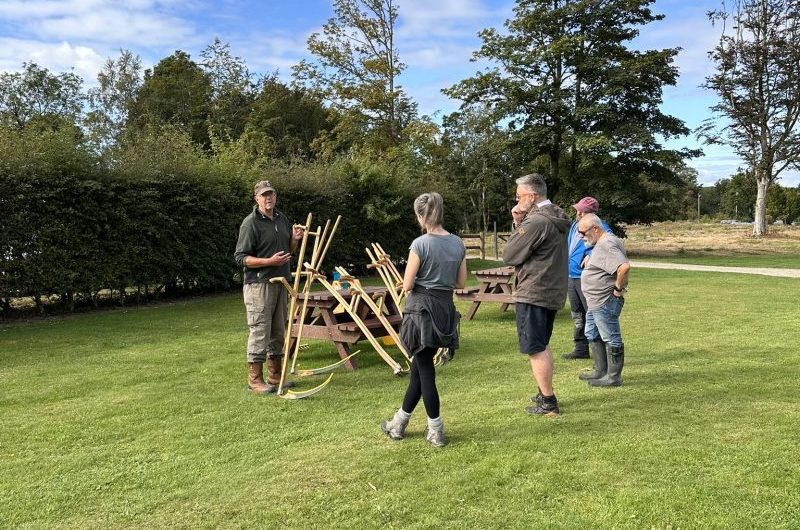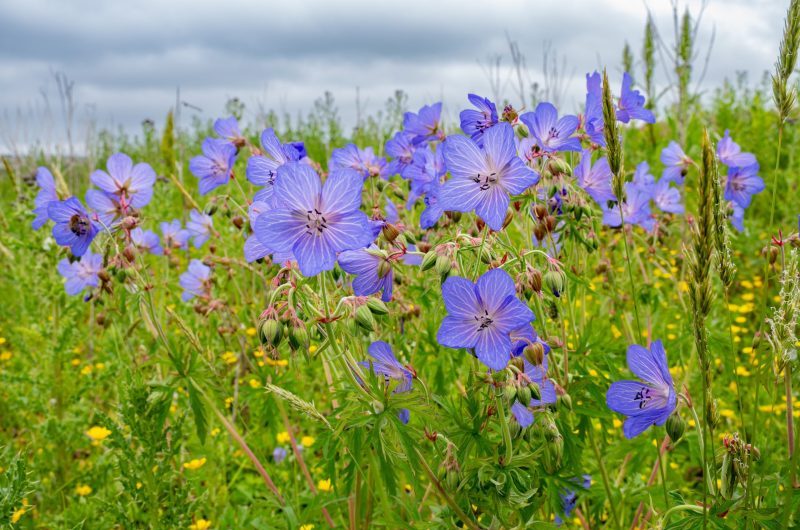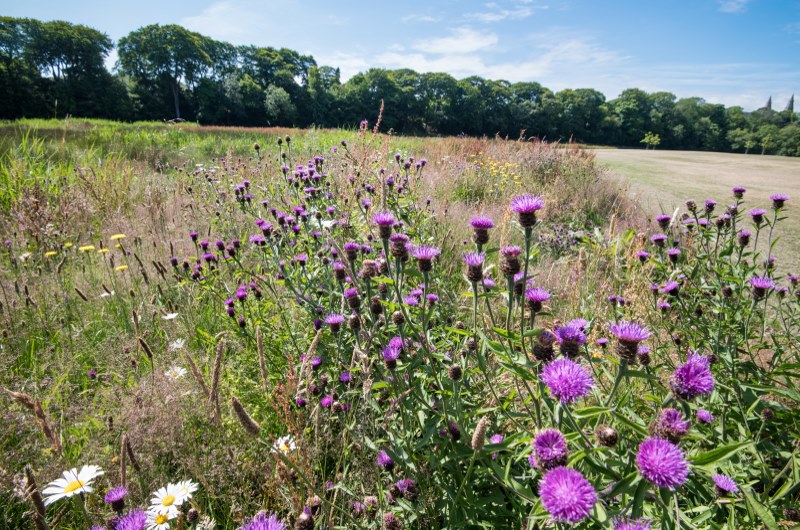10 Things We Learnt From Our Wildflower & Scything Workshops
And with that, the 2025 wildflower & scything season comes to an end….. Here are 10 things we learnt along the way.
And with that, the 2025 wildflower & scything season comes to an end….
This summer, 175 people attended eleven wildflower and scything workshops throughout Aberdeen City, Aberdeenshire and Moray. This was made possible by the kind sponsorship of TAQA Group. Although it would have been twelve, Storm Amy had other plans! Thank you to all who attended our workshops. Every session was unique, and we learnt something different each time. Ranging from types of plants to collect to tips on controlling ground elder! Here are the top 10 things we learnt along the way.
10 things we learnt from our wildflower and scything workshops
1. Learn a few plants at first, not to overwhelm yourself.
There are a lot of wildflowers native to North East Scotland. When you are first starting, try to learn a few. This way, you aren’t overwhelming yourself. Red Campion, Meadow Cranesbill, Yarrow, Creeping Buttercup, Ragged Robin, Devil’s Bit Scabious and Yellow Rattle are good starting points.
2. It’s all about trial and error – don’t be afraid to make mistakes.
Don’t panic. Growing a meadow can take time, and sometimes it’s gradual. Don’t worry if you’ve made a mistake or things haven’t gone to plan. Nature is not perfect, and neither are you. Note down what you think went wrong and try something different next time. John from CuramFyvie has created this beautiful guide to help people on their wildflower-growing journey.
3. Red Campion can smother Ground Elder!
Ground elder spreads quickly to form a mass of shallow roots and a carpet of leaves. Its rhizomatous root system allows it to spread rapidly and smother other plants. It’s not a good addition to your garden. CuramFyvie has a handy tip. Collect some red campion seed, make sure to grow the plant separately, remove your ground elder, disturb the soil and plant your red campion. Monitor the situation closely, as you may still need to remove the occasional ground elder.
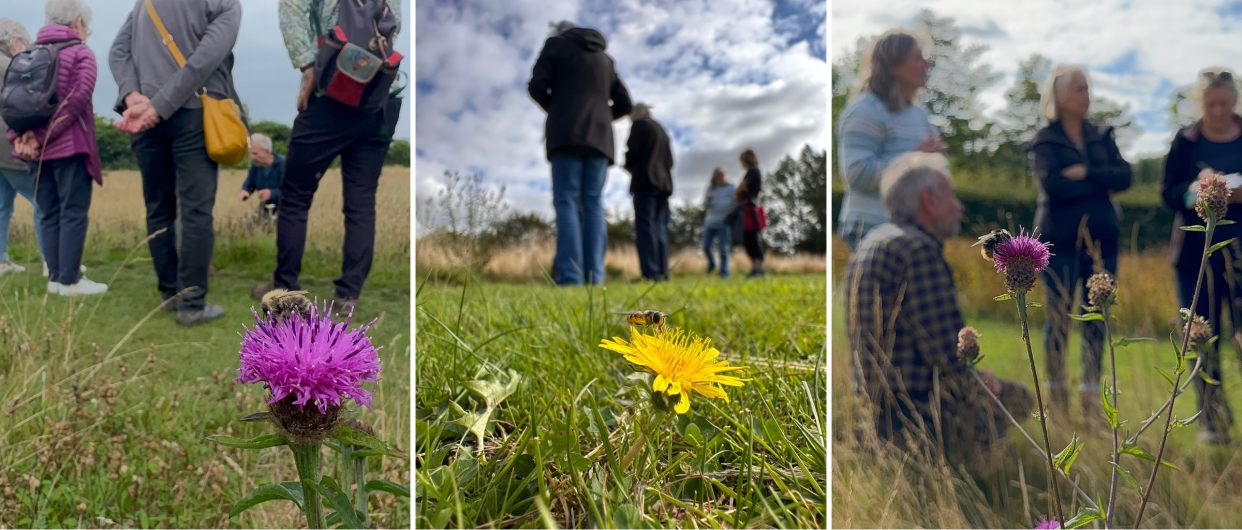
Pollinators feeding on knapweed and cat’s Ear during our workshops
4. Let things grow in your lawn.
Dandelions, clover and buttercups may already be growing in your lawn. They are all perfect for pollinators! You may also be surprised that selfheal, yarrow and devil’s bit scabious are already growing. The best wildlife gardener is a lazy one. Step away from the lawnmower (and weed killer) and see what grows.
5. When planning your wildflower meadow, don’t just think about bees and butterflies.
It’s an easy mistake to make, thinking you are helping nature if you plant bee- and butterfly-friendly plants. Beetles, wasps, flies and moths are also incredibly important pollinators, and they don’t necessarily feed on the same plants as bees and butterflies either. A great all-round plant is knapweed; even birds feed from it! By making your meadow a mini-ecosystem, you are taking action for your local biodiversity.
6. You can scythe as small as an allotment!
By scything your small green space, like allotments, orchards or gardens, rather than using a lawn mower or strimmer, you are saving money! You aren’t using fuel or electricity. You are also reducing noise pollution; mowing at 6am isn’t going to wake the neighbours if you use a scythe.
Big patches can also be scythed, but you need a lot of people. Watch this example from Tomintoul Wildflower Meadow

Scything is a fun activity for all!!
7. Scything isn’t just good for grasslands.
Scything has many benefits for grassland management. You can be selective with your mowing and have better control over when to cut, creating more diverse habitats. It’s less disruptive for wildlife than machinery; they are more likely to move out of the way, and it’s less noisy. But it isn’t just about wildlife; it’s a full-body workout (believe me!), and it gets you outside connecting with people and nature.
8. Lifting grass cuttings is better for wildflowers.
Traditionally, wildflower meadows are grazed by animals, trampled by herds or harvested for hay. This suppresses dominant grass growth and creates opportunities for more delicate flowers to flourish. By cutting and lifting, we are replicating these disturbances. Removing the clippings reduces soil nutrients, which wildflowers favour.
Learn more about meadow management and the cut and lift method.
9. A community feel = we aren’t alone
Scything in a community space allows you to connect with people and nature. It provides you with the opportunity to share ideas and experiences, working together to protect your local biodiversity. Reminding you, you aren’t fighting biodiversity loss alone.
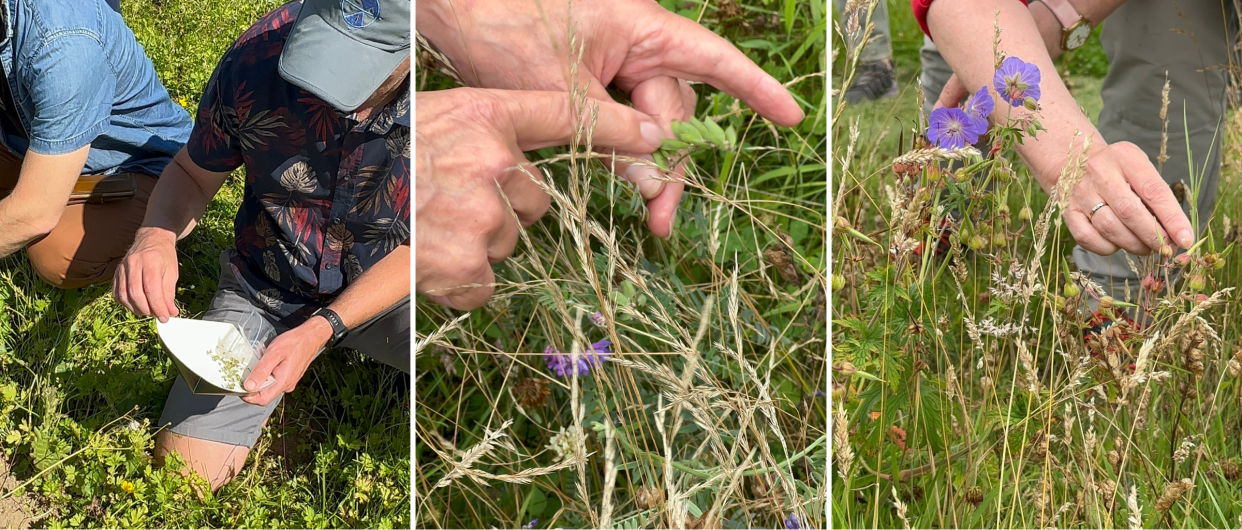
Creeping buttercup, tufted vetch and meadow cranesbill
10. Fun can be had by all!
Wildflower meadows are a beautiful addition to any greenspace, no matter the size. They bring people together to admire nature, no matter the age! (Scything workshops are for 18+ only due to health & safety, but little ones can help with collecting wildflower seed and raking up cuttings).
Thank you for reading.
We hope the 10 things we learnt from our wildflower and scything workshops have inspired you. Remember, don’t be disheartened if you don’t have a buzzing meadow next year; they take time.
A special thanks goes to…
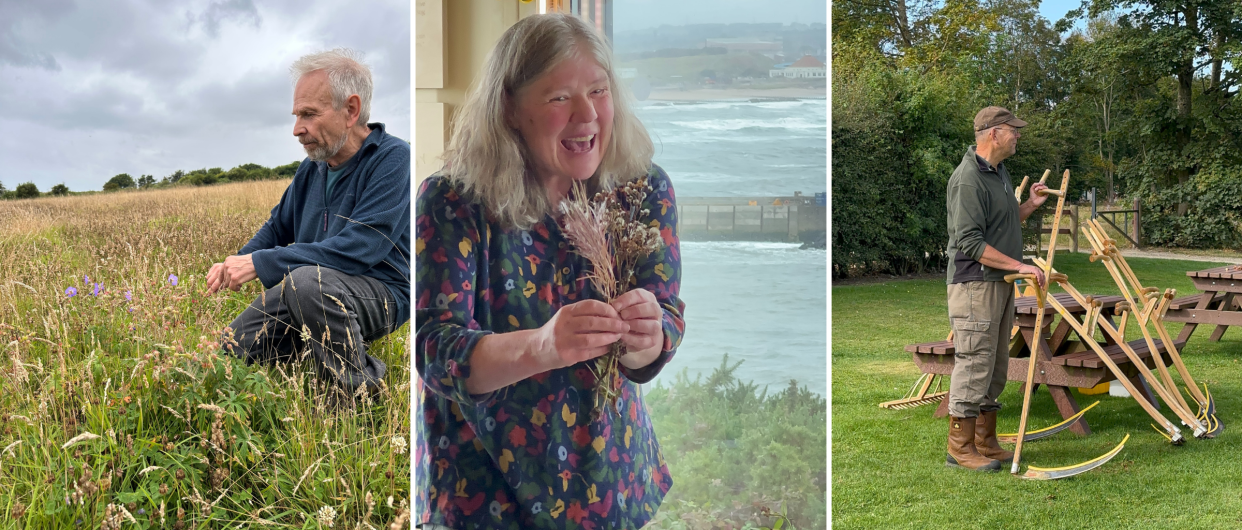
A massive thank you to John, Kate and Doug
… Doug, John and Kate for delivering these workshops for NESBiP. Their enthusiasm and passion for protecting biodiversity are contagious. I hope the attendees felt this too! Without them, we wouldn’t have learnt 1 thing about wildflower meadows and scything, let alone 10! Thank you for rarely saying no to NESBiP’s Biodiversity Coordinators’ crazy ideas and working incredibly hard to protect biodiversity 💚. We hope you have a well-deserved break.

Dressing like a cowboy to join our wildflower & scything workshop isn't mandatory, but it's encouraged © Abbie Ferrar
More News
Want to learn more?
Visit our Wildlife Gardening page to learn how to help your local wildlife from the comfort of your own home. With over 15 million gardens in Britain, covering an area larger than all our national nature reserves put together, what we choose to do with our gardens really does matter for nature.

Abbie Ferrar
NESBiP Biodiversity Coorindator (2024 - Present)


